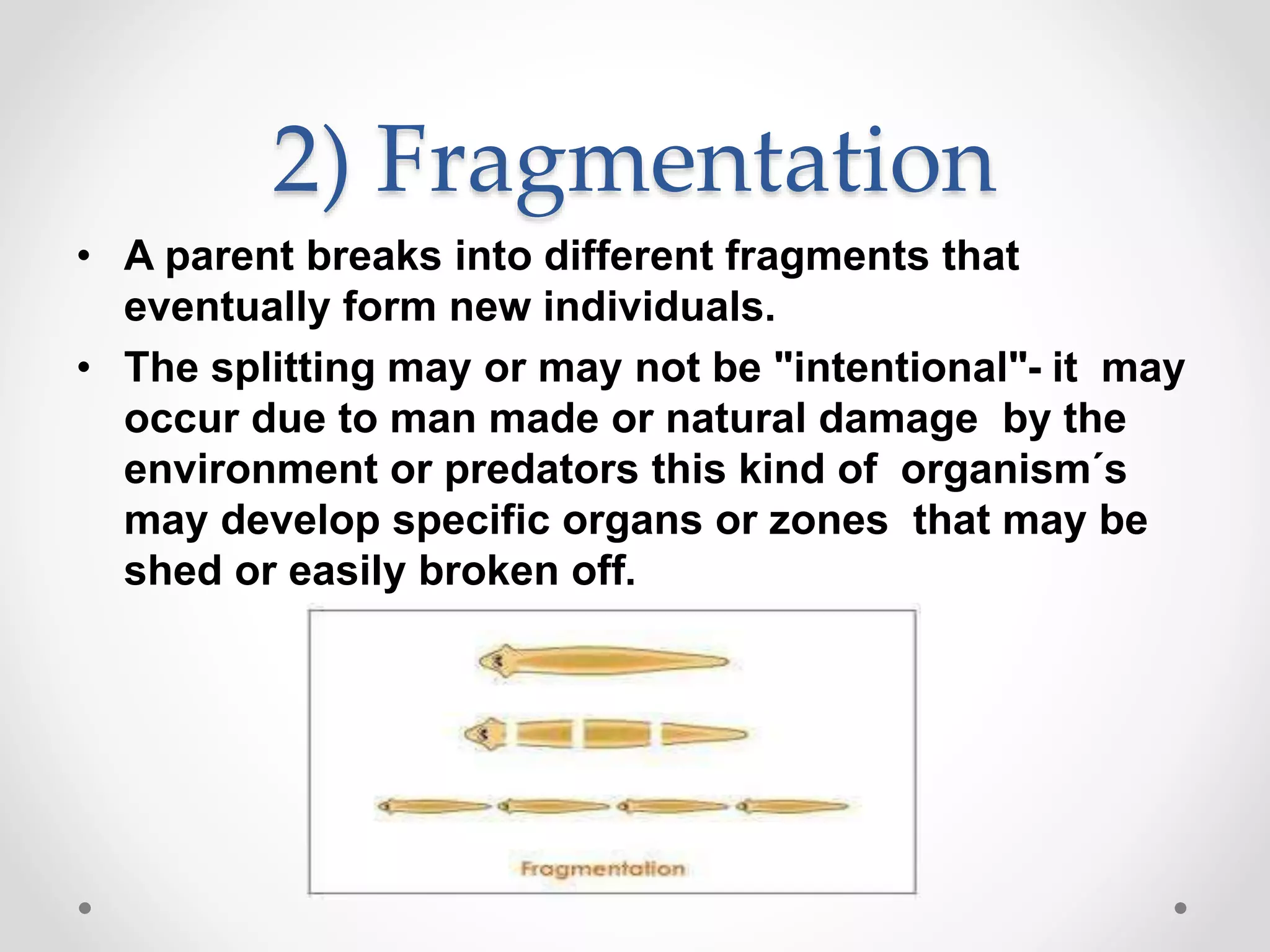This document discusses different types of asexual reproduction in organisms. It describes several modes of asexual reproduction including fission, budding, fragmentation, regeneration, vegetative propagation, and spore formation. Specific examples are provided to illustrate each type, such as binary fission in bacteria, budding in yeast, regeneration in lizards, fragmentation in algae, and spore formation in bread mold. The key advantages of asexual reproduction like vegetative propagation are also summarized.






























